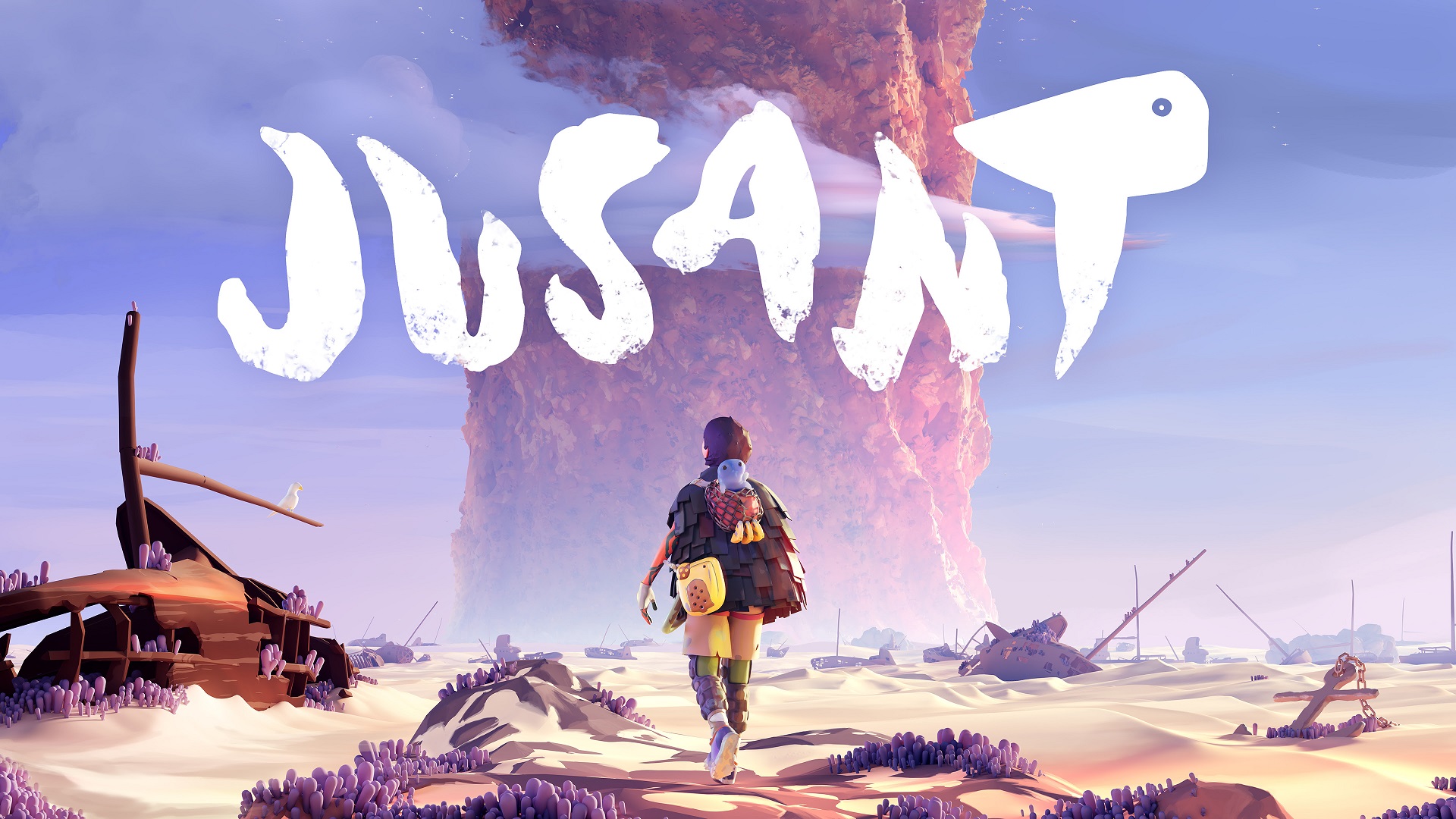
I saw a trailer for this game in an Xbox showcase in June 2023, and I remember thinking it looked interesting, but it gradually faded from my mind because it was one trailer among many and its look didn't really grab me. Now, in August, I've had a chance to play its demo, and left me wanting more. Another victory for demos!
You are a nameless explorer equipped with climbing gear, and carrying a friendly frog creature on your back. You gaze at a daunting, monolithic plateau reaching skyward from an infinite desert, seemingly the remains of an ocean, now dried up. Seeing a landmark partway up the mountain, you begin to climb. Your carabiner set, you haul yourself up steadily, hand over hand, towards your destination.
Jusant is what I'll call a 'climbing game'. Climbing in video games - specifically rock climbing, rather than platforming - can be rote and boring, a means of getting the player from Setpiece A to Setpiece B at a slwo enough rate to allow for loading (see the Uncharteds and Gods of War), but it has great potential for depth. Breath of the Wild is probably the go-to example of enjoyable climbing mechanics - and I won't discount its merits - but there are other approaches that allow for more player engagement in the moment-to-moment gameplay. A pair of small games from Ubisoft, Grow Home and Grow Up, adopted an approach of mapping the controller triggers to each of the player character's arms, allowing for more connection between the player and the world. DK: King of Swing did something similar, though to a lesser effect I think. It is this approach to climbing that Jusant has taken.
The tools the Jusant demo gives you include your main carabiner, which is often set automatically as you start to climb or manually near any wall; and a set of pitons, which can be set during a climb to arrest your fall should you make a misake. I think there's a lot of potential here, provided there are more tools or more is done with these tools. With just these, you're already able to swing and wallrun with a momentum that feels really good. I'm looking forward to seeing how this evolves over the course of the full game.
Art-wise, this game really grew on me the more I played, the more background that was revealed about the society that grew on the mountain. Notes and journals mention that all the haphazard scaffolding is built from shipwrecks, and a vague nautical language is present throughout, even though it might be long past the time when the ocean was even a factor in these peoples' lives. A very charming bit of worldbuilding that I appreciated. Maybe that's not directly about the art itself, but I found myself looking at it differently knowing it was grounded in something. The artstyle itself it clean, the smooth materials making for very readable climbing paths. But where people once lived, the clutter of scavenged detritus makes it feel lived-in. I want to know about the people who lived here, though I don't know if it's as easy to follow as, say, Outer Wilds.
Overall, I liked the demo! It's a satisfying kind of traversal that I thought only Grow Home/Up would ever capitalize on, and the game offers enough story intrigue to hook me. I'll probably pick it up on Gamepass when it comes out in October!